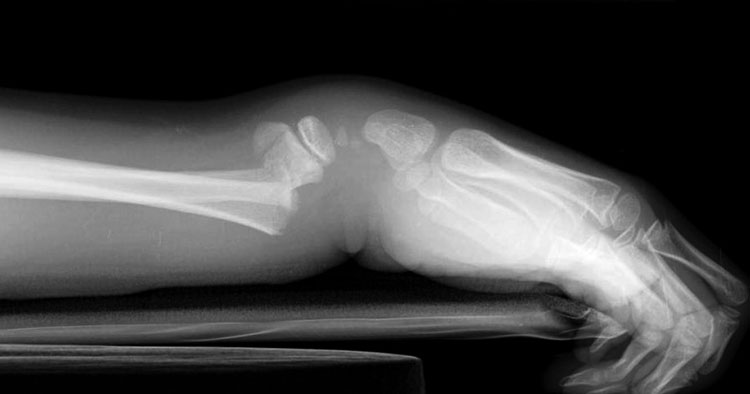Back and Joint Pain, Sports Injuries and Management
Colles Fracture A Common Wrist Fracture
Falls Onto An Outstretched Hand
A Colles fracture draws its name from the Irish surgeon Dr Abraham Colles who first described the injury. A typical Colles fracture results in upward (posterior) displacement of the radius causing obvious and a fairly recognizable deformity. It is a common type of wrist fracture typically the result of a fall onto an outstretched hand. A Colles fracture is a fracture of the distal radius close to the wrist, however is an injury and fracture that does not involve the wrist joint and is usually situated proximal to the radioulnar joint.
- The site of injury occurs at the distal metaphysis of the radius, which is a relative weak point of the bone.
- The metaphysis is the narrow portion of a long bone between the shaft and end of the bone.
- The Metaphysis is the part of the bone that contains the area of bone that grows during childhood.
Who Is At Risk Of A Colles Fracture?
Colles fractures are seen in all adult age groups and demographics however are particularly common in patients with osteoporosis (advanced thinning of bones) and as such Colles fractures are most frequently seen in elderly women who are the population most commonly diagnosed with osteoporosis.
- In this population of older individuals with weaker bones Colles fractures can occur as the result of simply tripping and falling onto an outstretched hand.
- Yet in younger individuals with “stronger” bones Colles fractures are usually the result of high impact trauma where more energy is required to fracture the bone. Henceforth such fractures in younger patients are often the result of high speed falls during sporting and leisure activities like skiing, horse riding and motorcycling accidents…
Presentation Of Colles Fractures
As mentioned earlier a Colles fracture is a wrist fracture where there is posterior displacement of the distal fragment of the radius resulting from a fall. A type of fracture that causes a wrist deformity where the shape resembles the curves of a dinner fork.
Some Strong Signs Someone May Have Suffered A Colles Fracture:
- History of fall on an outstretched hand in the elderly.
- Deformity of wrist resembling the curves of a dinner fork.
- Worth noting that sometimes the associated swelling and/or bruising following the trauma may mask the deformity if significant enough.
Other signs someone may have suffered a wrist fracture following a fall may include:
- Dorsal wrist pain and/or tenderness to palpation of the back of the wrist.
- Associated functional limitation of the wrist and hand, with pain on use of the wrist and hand.
If you suspect you have suffered a wrist fracture it is recommended you visit the emergency department at your nearest hospital for assessment and appropriate imaging, rather than present to your local physiotherapy clinic.
Disclaimer: Sydney Physio Clinic does not endorse any treatments, procedures, products mentioned. This information is provided as an educational service and is not intended to serve as medical advice. Anyone seeking specific advice or assistance regarding Colles Fracture A Common Wrist Fracture should consult his or her orthopaedic surgeon, general practitioner, sports medicine specialist or physiotherapist.


